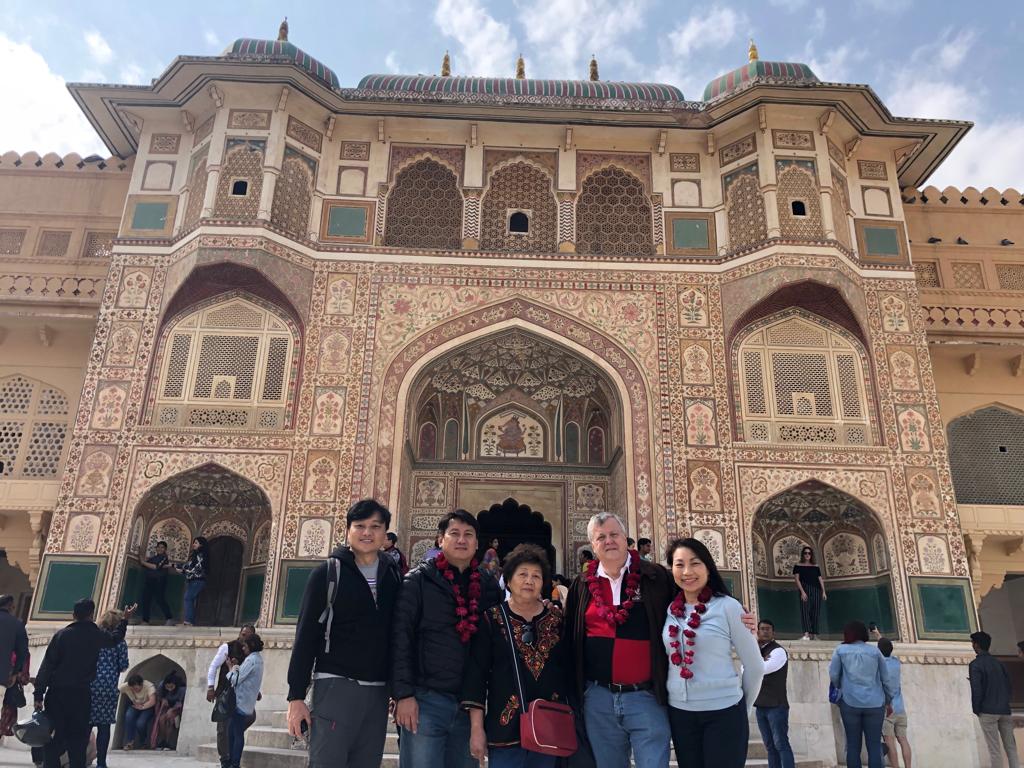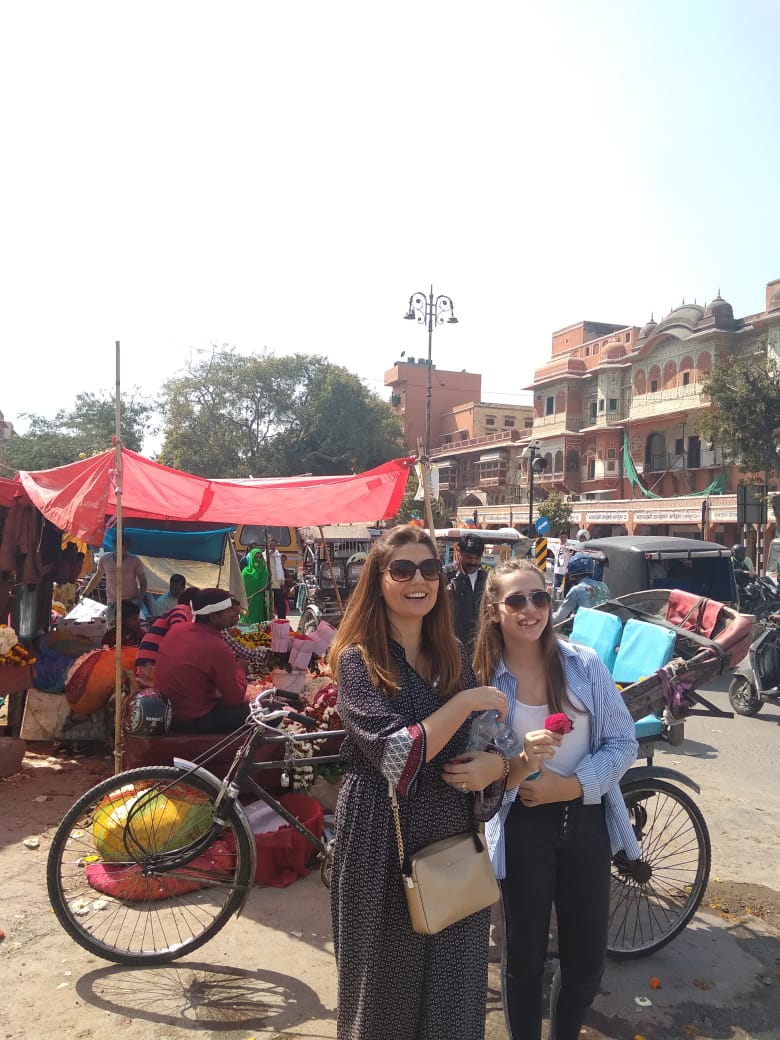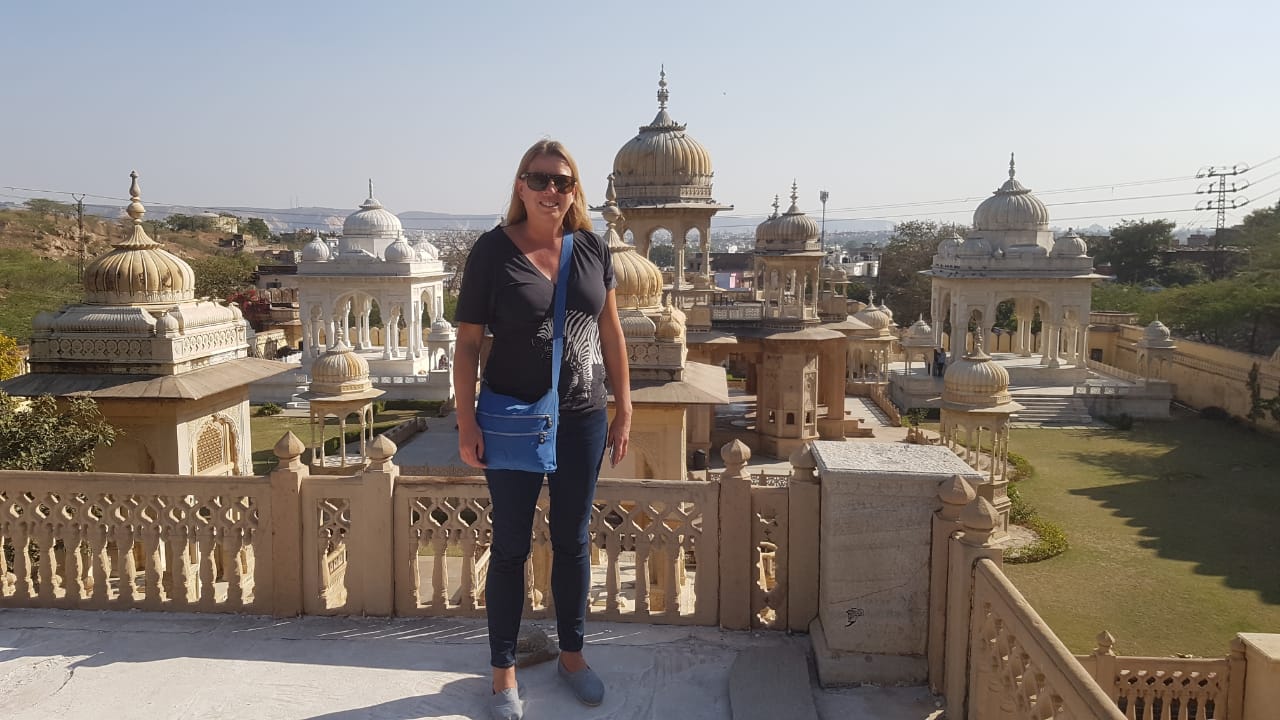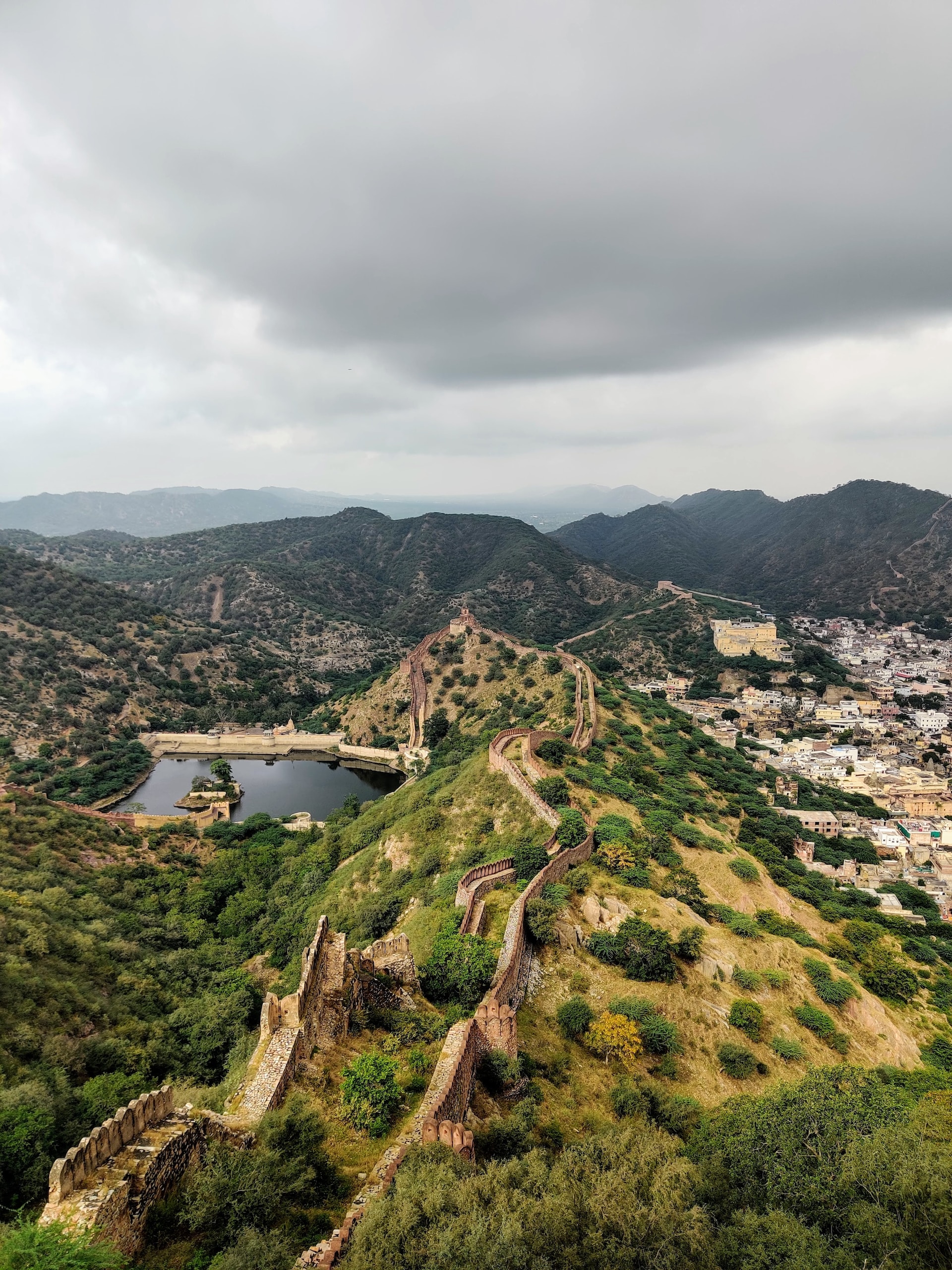from 0 review
2 Days
Daily Tour
1 to 10 people
Anglais, Français, Italien
Day 1 – Our day will commence with a visit to the awe-inspiring Amber Fort, established in the 11th century. Crafted with yellow and pink sandstone, as well as gleaming white marble, this architectural marvel will leave you breathless. As we enter through the Sun Gate, your private guided tour will unveil lavish courtyards, adorned halls, and the dazzling Chamber of Mirrors.
We’ll then proceed to the enchanting Panna Meena Stepwell, the second-largest stepwell in the region. This hidden gem is a true photographic delight. Local lore suggests that one cannot use the same set of stairs to descend and ascend. While descending into the stepwell is not permitted due to safety reasons.
Next, we’ll venture to the ancient temple of Jagat Siromani Ji, an architectural masterpiece built between 1599 and 1608 AD. Prepare to be mesmerized by the grandeur and intricate stone work of this peaceful yet lesser-known sanctuary, which remains unexplored by many travelers.
Our journey will take us to the Water Palace, situated in the middle of a serene lake. Although off-limits to the public, this ancient palace, once utilized for duck-hunting, offers a picture-perfect view, ideal for capturing postcard-worthy photographs.
Continuing our exploration, we’ll drive to downtown Jaipur to explore the City Palace Museum. Blending Rajasthani and Mughal architectural styles, this palace complex boasts numerous buildings, courtyards, imposing gateways, and temples. Chandra Mahal still serves as the residence of the present royal family.
Our next destination is the iconic Hawa Mahal, widely regarded as Jaipur’s most acclaimed landmark. Constructed in 1799, it provided a vantage point for the women of the royal household to observe street processions while adhering to the strict purdah system. Adorned with 593 delicately screened windows and balconies, the facade creates an illusion of grandeur. Visitors can enter from the back to explore the interiors and marvel at the intricate stonework that once accommodated the women.
We will then visit the Jantar Mantar observatory, a remarkable collection of monumental instruments built in the 18th century. These instruments, designed for naked-eye astronomical observations, represent significant architectural and technological advancements and are the largest of their kind in India.
For those seeking a unique adventure, we can make our way to the Swargasuli Tower, a fascinating and less touristy attraction. Climbing up this prominent 18th-century minaret, with its swirling circular ramp, rewards you with panoramic views of the old city. While the ascent is steep, the refreshing breeze and breathtaking vistas make it a worthwhile experience.
To immerse ourselves in the vibrant ambiance of old Jaipur, we’ll embark on a tuk-tuk ride through its lively and colorful bazaars. Accompanied by your private guide, we’ll venture into the backstreets and alleys, providing a glimpse behind the scenes. Be sure to indulge in the delicious lassi at Lassiwala, renowned for its delectable flavors.
Immerse yourself in the enchanting realm of Jaipur Hand Block Printing Art, and prepare for an experience that will leave an indelible mark on your memories. With the guidance of skilled instructors, you will embark on a journey to design and personalize your very own Hand Block Printing napkin. Discover the ancient techniques and hidden intricacies of this art form, handed down through generations, as you unleash your creativity and bring forth a masterpiece that reflects your unique style and vision. This hands-on adventure promises to be truly unforgettable, allowing you to connect with the rich cultural heritage of Jaipur while leaving a lasting imprint of your artistic expression.
Day 2-
Today, our first destination is the magnificent Albert Hall Museum, a true pride of Jaipur. With its stunning architecture and intricate design, this museum stands as a remarkable example of Indo-Saracenic style. Built during the 19th century by the British in India, it showcases stylish decorative elements and exquisite craftsmanship. Admire the fine carvings, typical ‘Chhatri’ style towers, and the rich brown and beige stone exteriors. The museum’s sprawling garden, adorned with murals and Persian paintings, creates a visually pleasing experience. Inside, you’ll find a rich collection of artifacts, including paintings, carpets, ivory, stone and metal sculptures, and crystal works.
Next, we’ll proceed to the Patrika Gate, which serves as an entranceway to the Jahawar Circle Park, the largest circular park in Asia situated at a traffic signal. As you approach the gate, you’ll be greeted by a grand pink structure towering over lush trees. Stepping inside, you’ll discover a vibrant rainbow walkway adorned with intricate archways reflecting the essence of Rajasthani culture. Each archway showcases colorful artwork and highlights major attractions of Jaipur, including the Jal Mahal. Prepare to be captivated by the beauty and attention to detail, making this location one of the city’s top spots for photography.
We will then visit the Royal Gaitor Tombs, where beautifully carved stone monuments stand as a testament to intricate craftsmanship. Among them, the marble cenotaph with its dome supported by 20 carved pillars is particularly impressive.
Afterward, we’ll explore an 18th-century ancient monkey temple nestled within a rocky valley. Known as Galtaji or the Monkey Temple, this sanctuary is home to numerous monkeys. Despite the temples showing signs of wear, their distinctive roofs, balconies, and arches are still visible, evoking the temple’s former grandeur. This tranquil oasis offers a peaceful retreat from the vibrant and bustling city of Jaipur. The temple’s elaborate carvings and ruins create an enchanting atmosphere, reminiscent of scenes from the Jungle Book.
Our next stop is the Jaigarh Fort, situated on the Hill of Eagles. Built in 1726 AD, this fort offers panoramic views from its height of 500 feet above sea level. Within its expansive grounds, you’ll find the renowned ‘Jaivana Cannon,’ the world’s largest cannon on wheels. Made of sandstone and spread across a sprawling area of 3 km, Jaigarh Fort was constructed to protect the nearby Amer Fort. Often referred to as the ‘Victory Fort,’ it served as a stronghold for war armaments, cannons, and ammunition. The fort’s Persian-style garden, divided into four parts, adds to its allure. Notably, the fort’s lattice windows allow for a complete view of the surroundings while concealing the interiors from outside observers.
Lastly, we’ll drive to Nahargarh Fort, perched on a rocky ridge. The name ‘Nahargarh’ translates to ‘abode of tigers.’ The fort features 12 matching boudoirs for the queens, with a king’s suite at the forefront, all connected by corridors adorned with delicate murals. As dusk sets in, Nahargarh Fort offers a mesmerizing view of Jaipur city, adorned with countless sparkling lights. Witness a stunning sunset with a bird’s-eye view, overlooking the entire city (subject to favorable weather conditions).
More Photos
Amber Fort / palace

Panna Meena Stepwell

Jagat Siromani Ji Temple

Jal Mahal ( Water Palace)

City Palace Museum

Hawa Mahal

Jantar Mantar Observatory

Old City Walk

Lassiwala Drink

Hand Block Printing Class

Albert Hall Museum

Patrika gate

Royal Gaitor Tumbas

Monkey Temple ( Galta Ji)

Jaigarh Fort

Nahargarh Fort
Laisser un commentaire